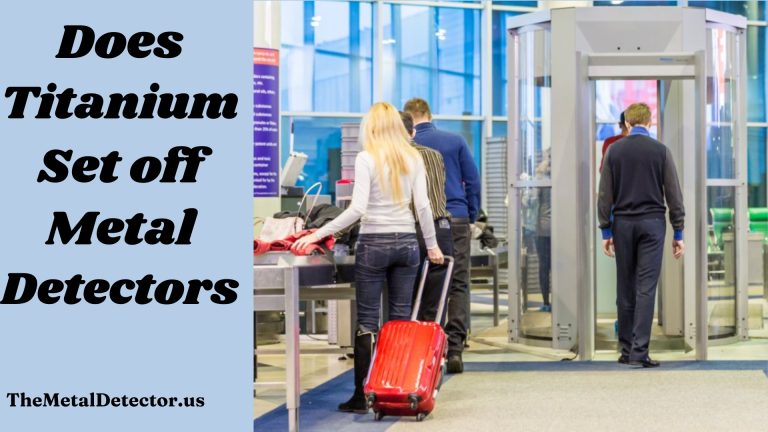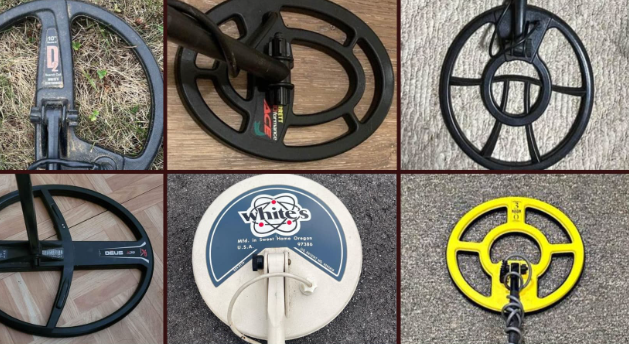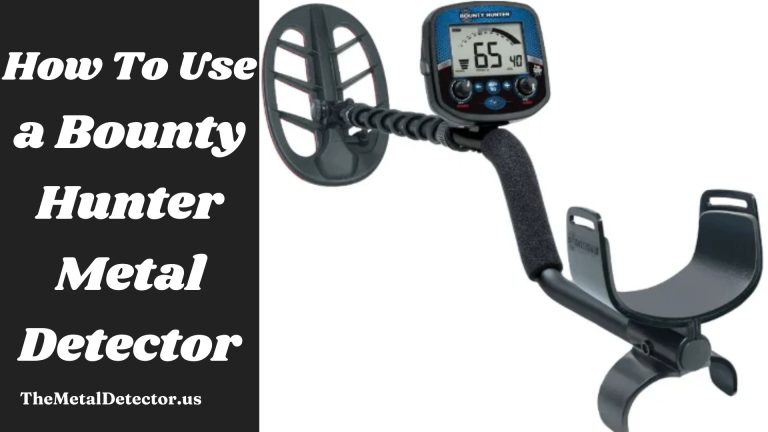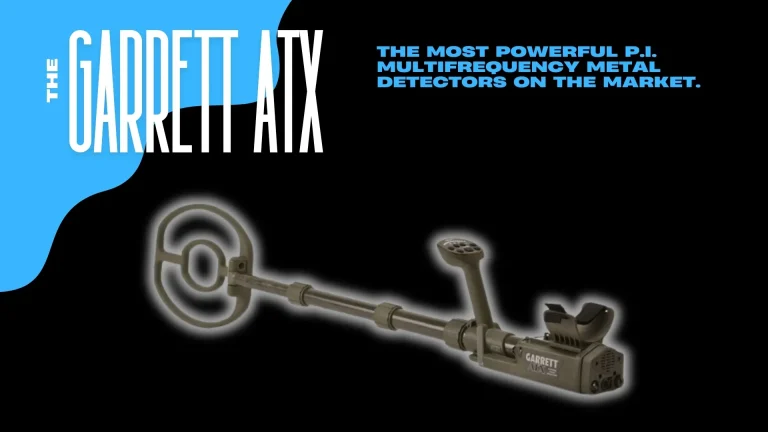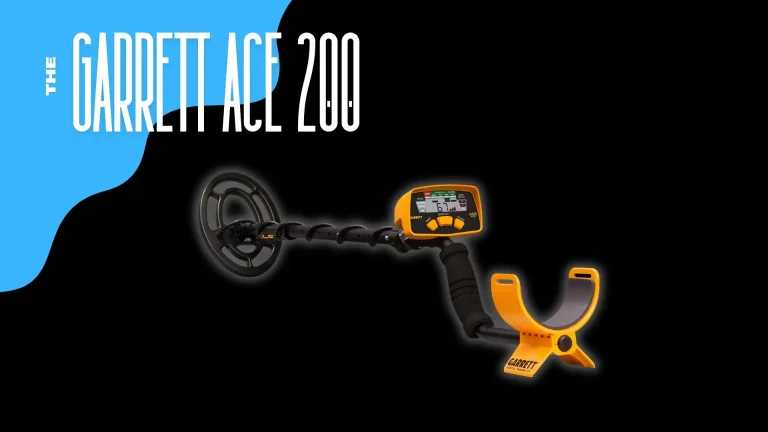Why I Like the Bounty Hunter Discovery 3300?
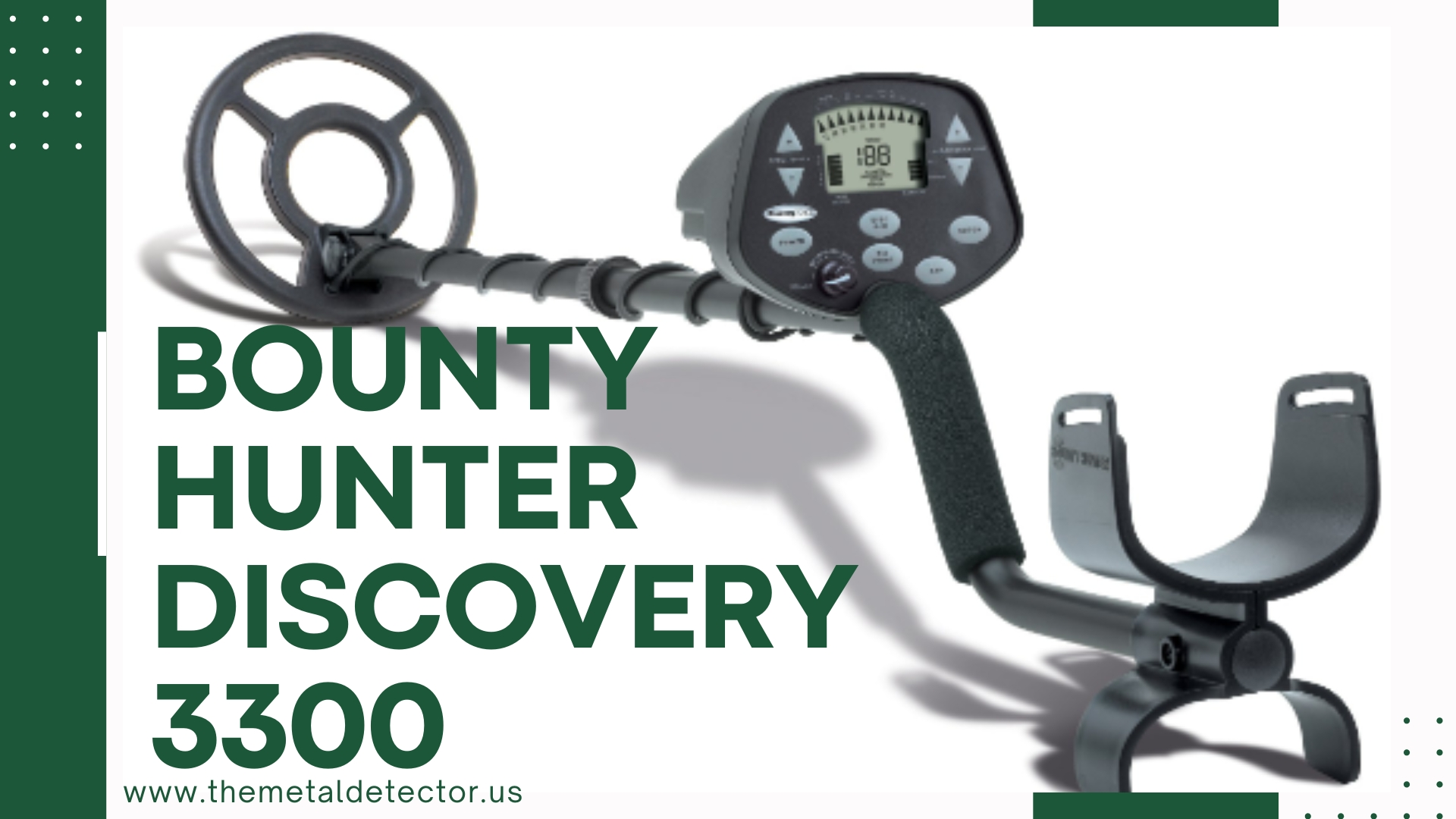
When I decided to buy a metal detector, I wanted something that was easy to use but still had advanced features. After researching, I choose the Bounty Hunter Discovery 3300. It offers a good mix of affordability and performance. For beginners and professionals, it is perfect because it combines simple controls with useful technology.
This metal detector has helped me find hidden metals with great accuracy. The Bounty Hunter Discovery 3300 can detect various types of metals, even in difficult ground conditions. I believe it is worth buying because it gives great value without being complicated to use.
In this detailed article, I will share my review of this metal detector with you. I will try to provide all the necessary information about this detector in my review that will help you to make the right decision before buying this metal detector.
History of The Discovery 3300 Metal Detector
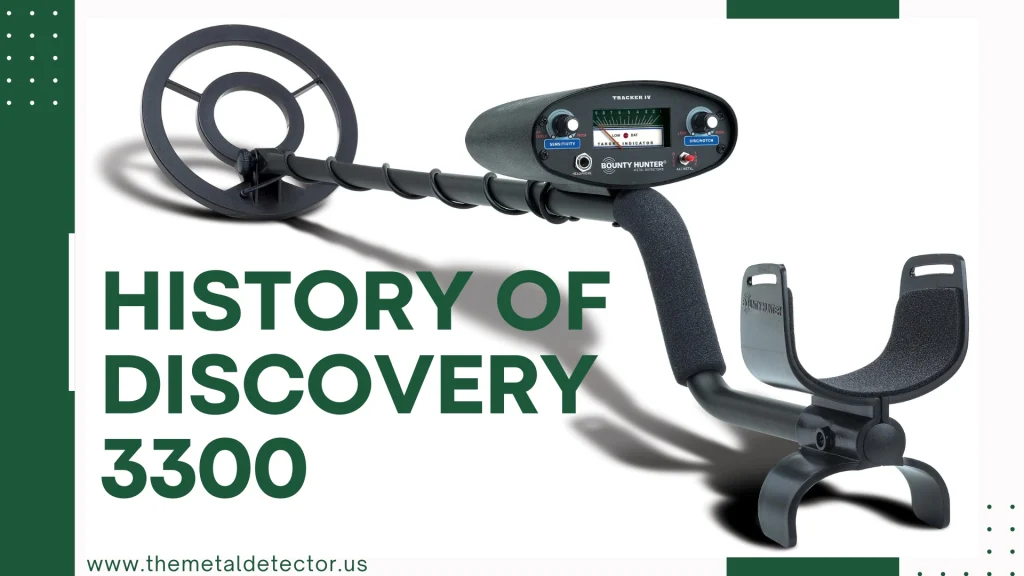
Bounty Hunter has been making metal detectors for many years. They are known for creating affordable and reliable detectors that are easy to use. The Discovery 3300 is one of their popular models because it has good features at a fair price. Bounty Hunter’s goal is to make machines that are simple for anyone to use, and the 3300 fits that goal perfectly.
When the Bounty Hunter Discovery 3300 came out, it became a favorite among metal detectorists. People liked it because it was easy to use but still had advanced features. It has stayed popular because it works well and lasts a long time, making it a great choice for both beginners and hobbyists.
If you also like the bounty hunter metal detectors then you must check out this amazing article and you can also consider buying it. Buy the best bounty hunter discovery 1100 metal detector from here.
Key Features of the Bounty Hunter Discovery 3300
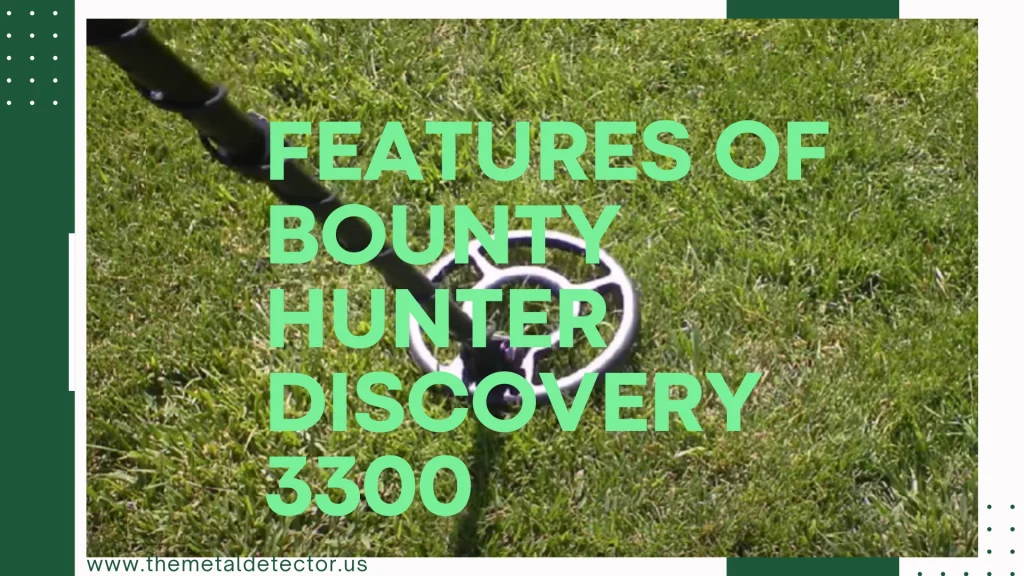
After using the Bounty Hunter Discovery 3300, I found several features that make it stand out. Each of these features helps improve the metal detecting experience, and they are easy to use, even for beginners. Below are the key features that I appreciate the most.
Digital Target ID
One of the best features of the Discovery 3300 is the Digital Target ID. This feature shows a number on the screen, which tells you what kind of metal you have found. The target ID ranges from 0 to 99. Lower numbers usually mean iron, while higher numbers indicate valuable metals like silver or copper.
This feature makes it much easier to decide whether to dig or move on. It saves a lot of time, and I have learned to trust the numbers for more accurate digs.
Ground Balancing
The Ground Balancing feature is very important, especially when detecting in areas with mineral-rich soil. This feature adjusts the metal detector to ignore signals from the ground and focus on actual metal targets. Without it, you might get false signals.
I have used the Discovery 3300 in different conditions and areas, and the ground balancing has worked well. This feature makes it easier to detect real targets and avoid the frustration of false alerts.
Discrimination Control
The Discrimination Control lets me choose which types of metals to ignore. For example, if I’m only looking for coins or jewellery, I can set the detector to ignore iron or other unwanted metals. This feature is very helpful when searching in areas with a lot of trash or scrap metal. I use it often to cut down on digging for junk and focus on valuable finds.
Pinpoint Mode
The Pinpoint Mode is a lifesaver when it comes to locating exactly where the metal object is buried. Once the detector beeps over a target, I switch to pinpoint mode, and it helps narrow down the location. This saves time and effort because I don’t have to dig wide holes.
Instead, I can dig precisely where the target is. It is especially useful when the target is small and buried deep.
4-Tone Audio Feedback
The Discovery 3300 comes with 4-tone Audio Feedback, which means it makes different sounds for different metals. Low tones often signal iron or trash, while higher tones indicate more valuable metals like coins or jewellery. I find this feature very helpful because I can listen to the sounds and instantly know what type of metal might be below. It adds an extra layer of information without always needing to look at the screen.
Notch Mode
The Notch Mode allows me to pick and choose specific types of metals to detect. For example, I can set it to ignore certain metals like aluminium or foil while still detecting others like silver or gold. I find this feature helpful when searching in parks or areas with a lot of litter.
It helps me focus on finding what I’m really looking for without getting distracted by trash signals.
Sensitivity Control
The Sensitivity Control feature lets me adjust how deep the detector will search. If I am looking for shallow targets, I can lower the sensitivity. For deeper objects, I increase it. I find this control very useful, especially when searching in areas with both shallow and deep targets. It gives me flexibility depending on where I’m detecting.
Lightweight Design
One thing I appreciate about the Discovery 3300 is its lightweight design. It’s easy to carry, even for long hours of detecting. I have used it for long periods without feeling tired or uncomfortable. The light weight also makes it easy to swing the detector back and forth, which is important when covering large areas.
Large LCD Display
The large LCD display is clear and easy to read, even in bright sunlight. All the important information, like target ID and battery life, is displayed on the screen. I like how simple it is to see everything at a glance without having to press too many buttons. The display is user-friendly, and it helps me stay focused on detecting.
Check out this informational article about Aluminium setting off a metal detector.
Performance in the Field
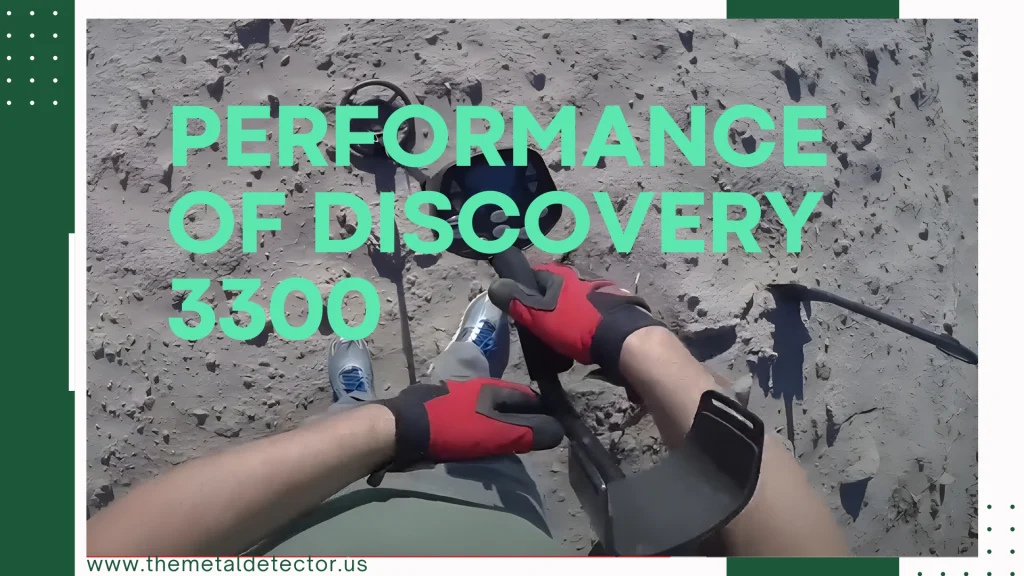
After using the Bounty Hunter Discovery 3300 in different environments, I have been impressed with its performance. Whether I am detecting in parks, beaches, or fields, this metal detector has proven to be reliable and efficient. In the following, I will explain how it performs in key areas like sensitivity, depth, and target identification.
Sensitivity and Depth
The sensitivity of the Discovery 3300 is one of its strongest points. It allows me to adjust how deep the detector searches, which is very helpful. In areas where I a looking for deep targets, I can increase the sensitivity to find objects buried up to 8 or 9 inches. For shallow areas, I lower the sensitivity to avoid picking up too many unwanted signals. The ability to change sensitivity gives me more control, depending on where I am searching.
In terms of depth, the Discovery 3300 performs well for its price. I have found coins and small objects buried several inches deep without any trouble. It may not be as powerful as high-end models, but for a mid-range detector, it digs deep enough for most detectorists. I have been able to detect both small and large items with good accuracy at various depths.
Accuracy of Target Identification
One of the things I like most about the Discovery 3300 is its accuracy in identifying targets. The digital target ID is very helpful, especially for knowing whether I have found trash or treasure. I have learned to trust the numbers on the screen, which range from 0 to 99, to give me a clear idea of what’s below.
This feature has saved me a lot of time, as I don’t waste energy digging up useless objects like nails or scrap metal.
I also rely on the 4-tone audio feedback, which plays different sounds for different types of metals. High tones usually mean valuable finds like coins or jewellery, while low tones indicate items like iron or aluminium. This helps me make quick decisions about whether to dig or move on, without always looking at the screen.
The combination of visual and audio cues makes it easy to identify targets accurately.
Experience in Different Areas
I have used the Bounty Hunter Discovery 3300 in several areas, from parks to beaches and even rocky ground. It performs well across all these environments. On beaches, where the ground can be mineral-rich, the ground balancing feature really comes in handy. It reduces false signals, allowing me to focus on actual metal targets.
Even in challenging areas like wet sand, the detector remains stable and doesn’t pick up as many false signals as some other detectors I have tried.
In fields and wooded areas, the discrimination feature is useful for avoiding junk. I often set it to ignore iron or other unwanted metals, so I can focus on finding valuable items like coins and relics. The detector handles these areas well, and I have had no major issues using it in areas with a lot of trash or debris.
Build Quality
The build quality of the Discovery 3300 is another thing I appreciate. It’s lightweight, which makes it easy to carry and use for long periods without getting tired. The material feels durable enough for regular use, and I haven’t noticed any issues with its construction. The armrest is comfortable, and the overall design is solid. For its price, I think it is well-built and designed to last.
The control panel is straightforward and easy to understand, even for someone who’s new to metal detecting. The buttons are responsive, and the display is clear and easy to read. Overall, I think the Discovery 3300 offers a great balance between performance and build quality, making it a reliable choice for both beginners and more experienced users.
Specifications of Bounty Hunter 3300 Discovery
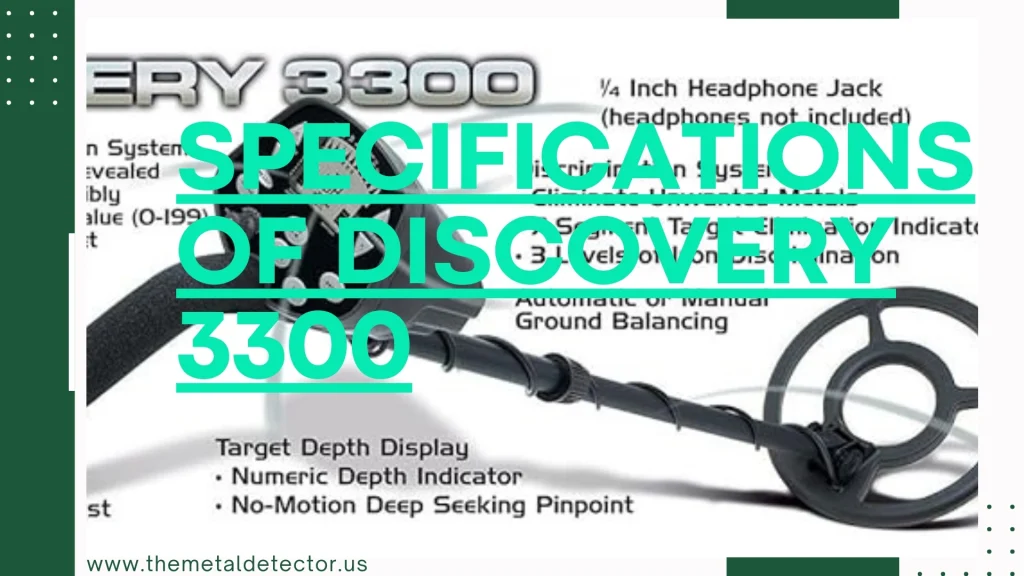
| Specification | Details |
|---|---|
| Operating Frequency | 6.6 kHz |
| Modes | 4 modes: All-Metal, Discrimination, Notch, and Pinpoint |
| Discrimination | Adjustable for iron, foil, pull-tabs, and other metals |
| Sensitivity Control | Adjustable sensitivity with multiple levels |
| Target ID | 11-segment Target ID display |
| Depth Indicator | 3-segment depth readout (shallow, medium, deep) |
| Pinpoint Function | Yes, with target depth indicator |
| Tone Identification | 3-tone audio (low, medium, high) |
| Ground Balance | Manual and automatic ground balancing |
| Search Coil | 8-inch waterproof concentric search coil |
| Battery Life | Requires 2 x 9V batteries, approximately 20-25 hours of operation |
| Weight | 2.5 lbs (1.13 kg) |
| Length | Adjustable from 43 inches to 53 inches |
| Display | LCD display with target identification and depth readout |
| Warranty | 5 years |
Pros and Cons of Discovery 3300

Pros
Cons
Conclusion
In conclusion, the Bounty Hunter Discovery 3300 is a good choice for beginners and those with some experience. It has useful features like sensitivity control, discrimination settings, and a pinpoint mode that make it easy to use. Its lightweight and simple design also makes it comfortable for long periods of detection.
Although it doesn’t have the deep search power of more expensive detectors, it still gives great value for its price. It’s a reliable detector that works well in different places, making it a solid option for those wanting good performance at an affordable cost.

